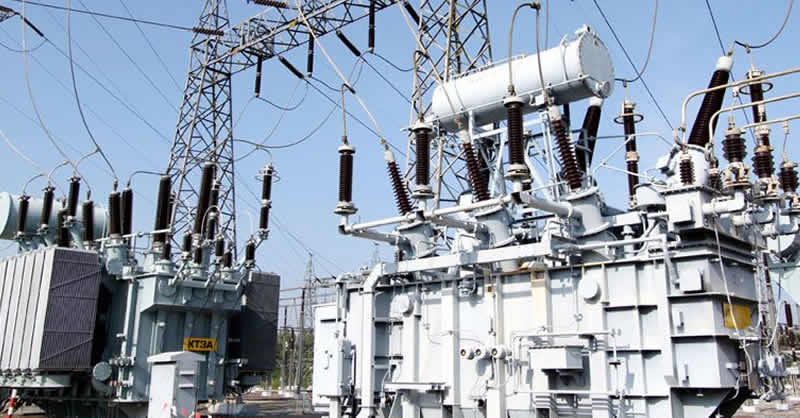A litter of abandoned power projects
The Nigerian public space is becoming a litter of abandoned power projects with many of them having been left uncompleted for many years. This is even though incremental power supply is desperately needed to meet the growing demands of the populace. The national power supply has been stuck at the magical average of 4000 MW […]

The Nigerian public space is becoming a litter of abandoned power projects with many of them having been left uncompleted for many years. This is even though incremental power supply is desperately needed to meet the growing demands of the populace. The national power supply has been stuck at the magical average of 4000 MW for as long as many of us can remember despite a growing population and growing needs and the fact that we are supposed to be producing an average of 33000 MW to meet those needs. This is not for lack of trying by various government institutions to help add to the national grid. It is rather the lack of willpower to complete the projects that is hampering increasing the national grid.
Of the many uncompleted power projects littering the country I am at least acquainted with two. Two months ago, I was on the road from Katsina coming towards Kano when I beheld on the right side this extensive farmland with well-arranged kitted poles dotted as far as the eyes could see. I thought it was an irrigation project until my travelling colleague told me that it was a wind farm to generate electricity. He explained to me that it is a project started by Umaru Musa Yar’Adua as governor of Katsina State in 2005 which was the first of its kind in the country and would have added 10 MW of clean power to the national grid when completed. Maybe due to its novelty as a green project, it was grabbed and taken over by the federal government in 2007 with a plan to complete it in 2012. To the anguish of the Katsina people and to us who would have witnessed a windmill for the first time this project stalled year in and year out and is yet to see the light of day.
The other dormant power project is even closer to me. I refer to the 50 MW Maiduguri Gas Plant which was started as a mercy project to mitigate the darkness that befell Maiduguri in January 2021 when Boko Haram insurgents attacked and incapacitated the only transmission line from Damaturu. Maiduguri was already a beleaguered city having been besieged by the Boko Haram insurgents for years on end. To add total darkness to the misfortune was an unmitigated disaster till a visit by the MD NNPCL to the state in April 2021 when he threw in that lifeline of the gas plant project. We all applauded, and true to his words a few weeks later a contract for the project was signed in August 2021 with China Machinery Engineering Company (CMEC) and General Electric (GE).
The gas plant, as promised by the MD NNPCL, was to be built and commissioned in four months. Matters dragged on for long forlorn days and months without the promise being fulfilled. Many of us who could afford it had to raid our already depleted bank accounts to buy into the solar alternative, but the larger parts of the city lay in darkness. In March this year, a contrived commissioning ceremony was arranged which President Buhari attended with a host of dignitaries in tow. The plant worked for a few days in some parts of the city and promptly shut down.
- Medical Council partners Bloom Public health to strengthen medical labs
- Why we arrested hubby of woman in ‘Mummy Calm Down’ video – Police
There are many such projects, meaning that the job is already cut out for the new Power Minister, Adebayo Adelabu, to make it a priority to complete these moribund power projects and put them to use.
The new Federal Civil Service Commission
President Tinubu’s recent appointment of Chairman and 20 members of the Federal Civil Service Commission seems to be filling square holes with square pegs to recharge the federal service for the tasks ahead. Of the lot, I can vouch for the quality of at least two of them; the Chairman, Prof. Tunji Olaopa and the member representing Gombe/Adamawa/Taraba, Dr Ibrahim Jalo Daudu. They were my contemporaries in the Presidential Villa for many years as civil servants working assiduously in the shadows to help the political masters shape events. They rose to be Permanent Secretaries in the State House and went on to serve in several ministries.
Both have been known to be apostles of change in the civil service and at various times have led the change agencies. Prof. Olaopa came into State House in the early 1990s into the Speech and Policy Unit and had never strayed far and had remained a sounding board of sorts for civil servants and policymakers alike. His forte is the public service reforms and he has written extensively and published a lot about the subject. I had the privilege of commenting on this page, recently, on his last book, ‘The Unending Quest for Reform: An Intellectual Memo’.
Dr. Daudu came into the federal service from Gombe State Civil Service where he was the Head of Service during Abubakar Hashidu’s administration. We were contemporaries at ABU Zaria in the mid-1970s where he read medicine and we came to closer association when he headed the MDGs’ team in Amina Mohammed’s office when she was the Senior Special Assistant on MDGs. Lately, he has been preoccupied in Gombe State where he was a valued member of the Governor’s Advisory Council. Recently, he was also the Chairman of the Gombe State Transition Management Committee.
